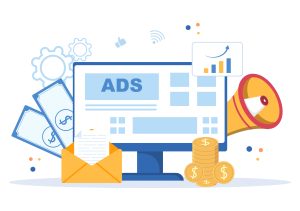
Pay-Per-Click (PPC) advertising is a valuable tool for businesses looking to reach a wider audience and drive conversions. However, with so many options available, it can be overwhelming to know where to start. This is why creating a well-structured PPC campaign is crucial. A well-structured campaign will help you achieve your goals while maximizing your return on investment. In this article, we’ll discuss the key components of a successful PPC campaign structure and provide you with tips on how to implement each one.
Define Your Goals
Before you start creating your PPC campaign, it’s important to have a clear understanding of what you want to achieve. Your goals will guide the structure and direction of your campaign, so take the time to consider what’s important to your business. For example, do you want to increase website traffic, generate leads, or drive sales?
Once you’ve defined your goals, you can create specific, measurable, attainable, relevant, and time-bound (SMART) objectives. This will help you track your progress and measure the success of your campaign.
Conduct Keyword Research
Keyword research is a critical part of any PPC campaign structure. It helps you understand what people are searching for and what keywords and phrases they use. This information can help you create relevant, targeted ads that will attract the right audience to your website.
To start, create a list of keywords that are relevant to your business and your goals. Consider both broad and long-tail keywords, as well as any relevant variations and synonyms. Use keyword research tools, such as Google Keyword Planner, to help you identify keywords with high search volume and low competition.
Organize Your Campaign Structure
Once you have a list of keywords, you’ll need to organize your PPC campaign structure. A well-organized campaign structure will help you manage your budget and track performance more effectively. Here are the key components of a successful PPC campaign structure:
- Ad Groups: Ad groups are a collection of related keywords and ads that are focused on a specific theme or topic. By creating distinct ad groups, you can ensure that your ads are relevant and targeted to the right audience.
- Ads: Your ads are the face of your PPC campaign and will appear in search results when people search for keywords related to your ad group. Be sure to create compelling, relevant ads that will attract the right audience and drive conversions.
- Landing Pages: A landing page is the page where your ad leads people. Make sure your landing pages are optimized for your target audience and provide a seamless experience from your ad to your website.
- Campaigns: A campaign is the highest level of your PPC campaign structure. It’s where you set your budget, targeting, and other campaign settings. You can create multiple campaigns for different products, services, or campaigns.
Target Your Audience
Once you have your campaign structure in place, you’ll need to target your audience. This involves choosing the right geographic location, language, device, and audience for your campaign.
Geographic location: If you’re targeting a specific geographic location, you can select the countries, regions, or cities where you want your ads to appear.
Language: If you’re targeting a specific language, you can select the language(s) you want your ads to appear in.
Device: You can target specific devices, such as desktop computers, laptops, tablets, or smartphones.
Audience: You can target specific audiences, such as age, gender, interests, and behaviors. This allows you to reach people who are most likely to be interested in your products or services.
Set Your Budget
Your budget is a crucial component of your PPC campaign. You’ll need to set a budget for each campaign and ad group, as well as a bid for each keyword. Your budget will determine how often your ads will appear and how much you’ll spend each day. It’s important to set a budget that’s realistic and in line with your goals and objectives.
Monitor and Adjust Your Campaign
Finally, it’s important to monitor your PPC campaign regularly and make adjustments as needed. This will help you optimize your campaign performance and achieve better results. You should track your campaign performance metrics, such as click-through rate (CTR), cost per click (CPC), and conversion rate. Based on this data, you can make changes to your campaign structure, ad copy, targeting, and bids to optimize your results.
Conclusion
Creating a successful PPC campaign structure is an important part of driving conversions and reaching your goals. By following these best practices and tips, you can create a well-structured campaign that delivers results. However, if you’re having trouble getting started or optimizing your PPC campaign, consider contacting Marketing Hatchery in Franklin, TN for help. They offer a variety of services, including PPC management and a free audit of your account. For more information, visit their PPC services page.



